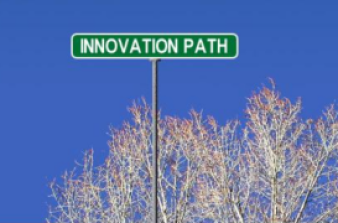 One of those defining extracts I came across many years back, as it is one that has shaped much of where I believe innovation needed to go, let alone where I believe it still does.
One of those defining extracts I came across many years back, as it is one that has shaped much of where I believe innovation needed to go, let alone where I believe it still does.
It is a pathway I want to continue to travel along and will constantly try to encourage others to equally take the walk.
I was working through a set of presentation files today and came across this extract again and thought I must share this. It rings true as much as it did those years back.
“Strategy is useless without innovation; innovation is directionless without strategy”.
Below is an extract from Reinventing Innovation by John J Kao. For me, it is sadly as relevant today as when I first came across it, some years back. Are we making real progress in our innovation activities?
Read it slowly, can I ask you to linger over its implications, its questioning and its suggestions. The extract offers much for any innovation pathway we might be considering.
The Innovation Pathway
” Innovation fits with a designer’s definition of design: the ability to move from the existing to the preferred.
Innovation is the path by which we seek the future we prefer. Not the future that we’re going to get, but rather the future we want.
Today, there is a vast gap between the aspiration for innovation and its reality. Innovation practices that are in step with the speed, uncertainty, and volatility of the new economy are still a promissory note, in this day and age.
Until we have practices that go beyond brainstorming on the one hand or simply tweaking a new product development process on the other, we will never arrive at the promised land of strategic innovation. Few if any can point to systematic practices that realize corporate innovation in a reliable and continuous fashion.
If you take innovation seriously within an organization, it touches every aspect of how business is done. It’s about leadership, organizational structure, knowledge management, corporate purpose and values, norms regarding collaboration, and strategic foresight processes.
Innovation touches everything. An innovation system requires an examination of the organization in a holistic kind of way, which is why most organizations have a tough time grasping the agenda.
We have to talk about the hard work of creating deep capabilities within the organization, capabilities that once established with tremendous effort don’t go away and confer a competitive advantage over long periods of time
The economies of scale organization are hierarchical and control focused, as is the mindset of its managers. Economies of discovery, on the other hand, which in my opinion are characteristic of the new economy, work quite differently.
Instead of efficiency, we strive for originality, for what will change the game. Instead of hierarchy and control, the focus of management must be on collaboration and enabling what is new.
There must first be an intimate connection between strategic thinking and innovation. Strategic planning must co-exist with strategic foresight. Innovation becomes an answer to a set of strategic questions. Strategy is useless without innovation; innovation is directionless without a strategy. Second, we must develop robust innovation processes
We also need a new sense of the scope of innovation, to look far beyond products and services of seeing things and shifting perspective, so that a new vision, a new set of possibilities can emerge.”
The extract is from “Reinventing innovation” by John J Kao, The Idea Factory.
This simply needs re-reading and recognizing what John said then, which still applies today. Do you agree?